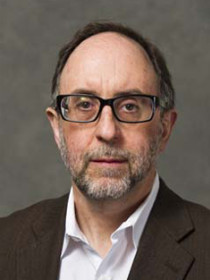
Doug Brugge
Professor and Chair, Department of Public Health Sciences, University of Connecticut
Chapter Member: Connecticut SSN
Areas of Expertise:
Connect with Doug
About Doug
Brugge’s expertise is in occupational and environmental health. His research, writing and teaching have encompassed several topical areas within this field, but he has particular emphasis on traffic/near highway pollution effects on health (especially cardiovascular disease), and housing conditions and asthma in children, asthma in immigrant populations, health effects of secondhand tobacco smoke, and health consequences of uranium mining. His work is largely community-based participatory research with substantial civic engagement inherent in the approach. He has over 130 scholarly publications, has testified before Congress, and is experienced at communicating with the media.
Contributions
In the News
Guest on CBS Boston, April 14, 2016.
Opinion: "Highway Soot is Making Massachusetts Residents Sick," Doug Brugge, MassPoliticsProfs, May 4, 2015.
Quoted by Melissa Kain in "Study Releases Report on Health of Communities near Highways," Tufts Daily, March 24, 2015.
Opinion: "The Biggest Public Health Threat Nobody is Talking About," Doug Brugge, Talking Points Memo, December 10, 2013.
Publications
"Improving Health in Communities Near Highways: Design Solutions from a Charrette," The Kresge Foundation, February 28, 2015.
Summarizes effective design approaches to reducing near highway residents’ exposure to traffic-related air pollution. Specific locations in Chinatown and Somerville are used as case studies.
"A Democratic University-Community Administrative Body Dedicated to Expanding Community Engaged Research: The Tufts Community Research Center (TCRC)" (with ). Community Development 44, no. 1 (2013): 97-110.
Describes the founding and development of the TCRC, a university-based, collaboration with community partners and how the center has had an impact, including contributing to multiple NIH-funded community engaged research studies.
"Highway Proximity Associated with Cardiovascular Disease Risk: The Influence of Individual-Level Confounders and Exposure Misclassification" (with ). Environmental Health 12, no. 1 (2013).
Shows an association between living closer to a highway and blood biomarkers of cardiovascular disease risk. Adds to the literature on near highway health effects by addressing factors not considered in prior analyses.
"Health Effects of Uranium: New Research Findings" (with ). Reviews on Environmental Health 26, no. 4 (2011): 231-249.
Updates an earlier review, also led by Dr. Brugge, of the health effects of uranium exposure. In the years leading up to this review there were numerous findings that suggest additional health concerns beyond those traditionally recognized.
"Lessons for Primary Prevention of Asthma: Foreign-Born Children Have Less Association of SES and Pests with Asthma Diagnosis" (with ). Journal of Immigrant and Minority Health 13 (2011): 462–469.
Asthma is more common in native than in foreign-born children. The findings are consistent with foreign-born children being less susceptible to developing asthma than US born children.
"Residential Traffic Exposure, Pulse Pressure and C-Reactive Protein: Consistency and Contrast among Exposure Characterization Methods" (with ). Environmental Health Perspectives 118, no. 6 (2010): 803-811.
Reports original findings of associations between residential proximity to major roadways and CRP and blood pressure in the Boston Puerto Rican Cohort.